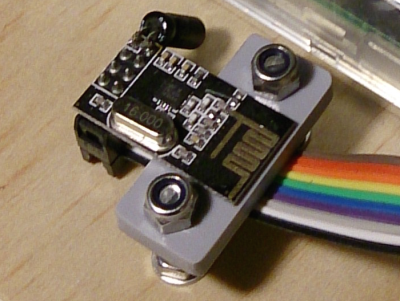[Captain Credible] is a chiptune music artist. He wanted to release an EP, but a regular old em-pee-three was too lame for him, so he made a tiny board with a coin cell, an ATtiny85, and a 3.5mm socket on it.
Rather than just writing some code to generate the tones for a pre-composed song, his “Dead Cats” EP generates the music itself. Using the arduino-tiny library, which adds the tone() function to the ATtiny, he has the chip pick its own time signature, key, subdivisions, and tempo. The melody and drum beat is randomly generated into an array. In addition to that, there are some code “one-liners” which insert unique sounds. After that the code just loops through the music.
If you don’t like the song, simply unplug the audio cable and plug it back in. The 3.5mm jack he chose has a built-in micro-switch, so the board is only powered up if someone is listening. If you’d like to see the circuit diagram, purchase the EP, or take a look at the code, all of that is available on his site.



















